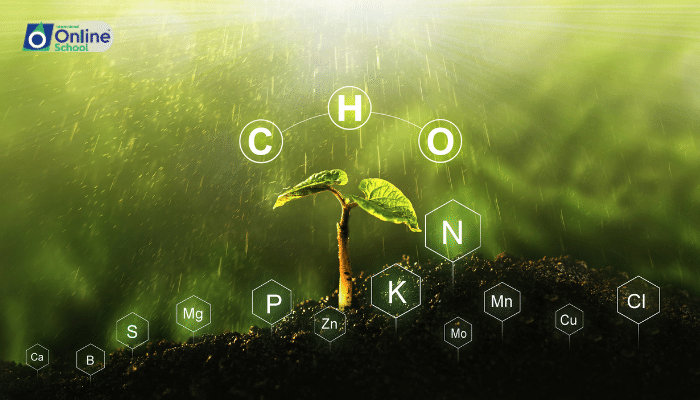
Learning Outcomes in Listing:
i. Define what mineral nutrition in plants entails.
ii. Differentiate between macronutrients and micronutrients.
iii. Identify the roles and importance of various mineral nutrients for plant health and development.
Learning Outcomes Described:
In this lesson, students will learn about mineral nutrition, the process by which plants absorb and utilize nutrients from the soil. They will understand the categorization of these nutrients into macronutrients, required in larger quantities, and micronutrients, needed in smaller amounts, both of which are essential for various physiological functions in plants.
Summary of Lesson:
Mineral nutrition refers to the absorption, transport, and utilization of minerals by plants. These minerals are typically absorbed from the soil and are crucial for plant growth, development, and health. This lesson will explore the two categories of mineral nutrients: macronutrients and micronutrients, and discuss their specific roles.
Content:
i. Understanding Mineral Nutrition: Mineral nutrition encompasses the uptake and assimilation of inorganic substances from the environment, which are necessary for plant growth and development.
ii. Macronutrients and Their Roles:
Macronutrients include nitrogen, phosphorus, potassium, calcium, magnesium, and sulfur, which are required in large amounts.
Nitrogen: Vital for protein synthesis.
Phosphorus: Key component of ATP and nucleic acids.
Potassium: Involved in the regulation of osmotic balance and enzyme activation.
iii. Micronutrients and Their Functions:
Micronutrients include iron, manganese, zinc, copper, molybdenum, boron, and chlorine, which are needed in trace amounts but are no less important.
Iron: Crucial for chlorophyll synthesis and function.
Zinc: Acts as a co-factor for many enzymes.
iv. Nutrient Absorption Mechanisms: Plants absorb these nutrients through their root systems, and they are transported throughout the plant via vascular tissues.
List of Important Questions for Self-Study:
i. Why is it necessary for plants to obtain mineral nutrients from the soil?
ii. How do the requirements for macronutrients differ from those of micronutrients?
iii. What are the consequences of a deficiency in any of the macronutrients or micronutrients?
iv. How can plants adapt to low nutrient availability in their environment?
v. What are some common symptoms of nutrient deficiencies in plants?
Important Terminologies Used in Lesson:
Mineral Nutrition: The uptake and utilization of inorganic compounds by plants.
Macronutrients: Essential chemical elements that plants need in large amounts.
Micronutrients: Essential elements needed in small quantities for plant growth and development.
Chlorophyll: The green pigment in plants responsible for the absorption of light to provide energy for photosynthesis.
Enzyme Co-factor: A non-protein chemical compound or metallic ion that is required for an enzyme's activity as a catalyst.